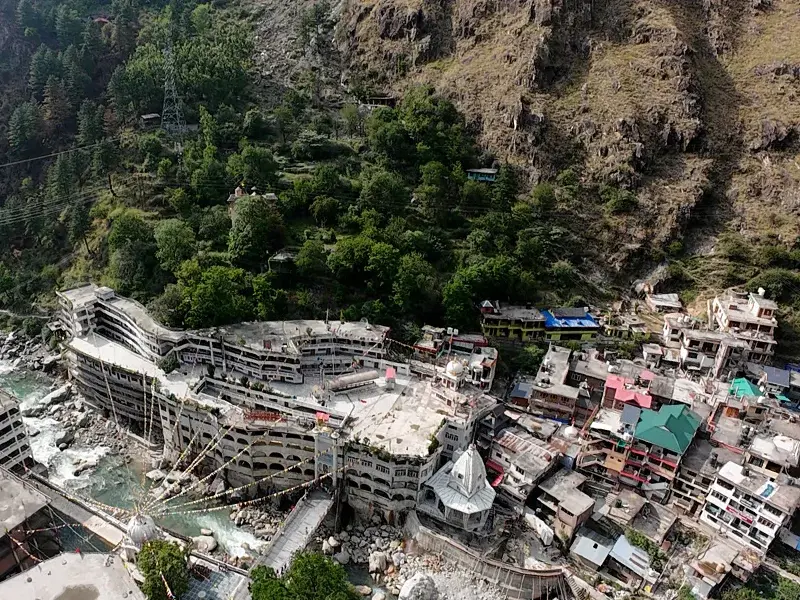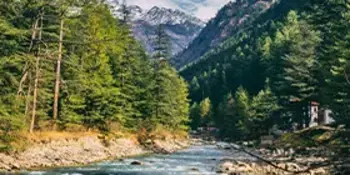


Manikaran Sahib, located just 4 km from Kasol, is a spiritual haven in the Parvati Valley of Himachal Pradesh, revered by both Sikhs and Hindus. According to Sikh history, Guru Nanak Dev Ji visited this place in the 16th century, accompanied by his disciple Bhai Mardana. When Mardana felt hungry, they had no food or fire. Legend says Guru Nanak asked him to lift a rock, and miraculously, a hot spring emerged...

Places To Visit In Kasol
Top places to visit in Kasol, naturally serene.
.webp)
Images Of Kasol
Kasol Photo Gallery: Explore the Beauty of Parvati Valley
Places To Visit In Kasol
Images Of Kasol
Light woolens in summer (March–June, Sept–Nov) due to cool breeze from river.
Heavy woolens and waterproof jackets during winter (Dec–Feb).
Avoid synthetic footwear; wear rubber sandals near hot spring.
No acclimatization issues here like Leh, but carry basic medicine for nausea or cold due to altitude (6500 ft).
Carry moisturizers and sunscreen to protect from cold burns and UV.
🧘♀️ Meditate near the Parvati River and hot spring pools.
🍛 Enjoy Langar inside the Gurudwara with other visitors.
📷 Take photos from the suspension bridge and riverside.
🥾 Walk to nearby temples and markets in Manikaran and Kasol.
Free Langar (simple daal-rice, sabzi) is a must-try, cooked naturally in hot spring.
Try local Himachali Rajma Chawal at nearby cafes.
Cafes in Kasol also serve Israeli, Italian, and organic food for international travelers.
March to June and September to November for pleasant weather
Manikaran Sahib, located just 4 km from Kasol, is a spiritual haven in the Parvati Valley of Himachal Pradesh, revered by both Sikhs and Hindus. According to Sikh history, Guru Nanak Dev Ji visited this place in the 16th century, accompanied by his disciple Bhai Mardana. When Mardana felt hungry, they had no food or fire. Legend says Guru Nanak asked him to lift a rock, and miraculously, a hot spring emerged.
Mardana placed raw food into the boiling water and it was cooked instantly. Guru Nanak emphasized the importance of sharing and selfless service, laying the foundation for the tradition of Langar (community meal) that continues today.
The Hindus believe that Lord Shiva and Goddess Parvati once meditated here. When Parvati lost her earrings in the river, Lord Shiva got angry, and from his third eye, energy surged that caused the hot water springs to emerge.
Today, Kasol Manikaran Sahib stands as a divine fusion of nature and spirituality. Pilgrims take dips in the hot water for its purifying and healing properties, and the steam-cooked Langar is offered to all, symbolizing unity, humility, and service.
🕉️ A Dual Faith Pilgrimage Site
Manikaran is sacred to both Sikhs and Hindus, with a Gurudwara, temples, and natural hot springs that draw people of all faiths seeking peace.
♨️ Hot Springs That Cook Food
The boiling spring water is so hot that rice and vegetables can be cooked in it. Pilgrims often dip food in cloth bundles as part of a spiritual ritual.
🍛 Free Langar for Everyone
The Gurudwara serves free meals (Langar) cooked using hot spring steam, representing Guru Nanak’s message of equality and seva (service).
🏔️ Nestled in Parvati Valley
Surrounded by pine forests and the roaring Parvati River, the scenic beauty enhances the tranquil and spiritual vibe of the place.
🛐 Daily Prayers & Kirtans
Gurudwara Manikaran Sahib holds daily prayers, bhajans, and kirtans, offering visitors a spiritual and emotional detox.
🚿 Healing Belief in Hot Springs
Locals believe bathing in the hot springs heals skin ailments and purifies sins, making it a sacred and medicinal experience.
🌉 Suspension Bridge & River View
A hanging bridge offers surreal views of the river, valley, and surrounding snow peaks, ideal for photography and meditation.
❄️ Accessible All Year Round
Unlike high-altitude places, Kasol Manikaran Sahib remains accessible even during winter, though the valley gets covered in snow.
Guru Nanak’s Miracle of the Hot Spring
According to Sikh history, Guru Nanak's disciple Mardana could not light a fire to cook food due to wet wood. Upon Guru Nanak’s instructions, he lifted a rock—and a boiling spring gushed forth. Mardana placed food wrapped in cloth into the hot water, and it got cooked instantly. This act was seen as a miracle and reinforced Guru Nanak’s teaching of divine power being present in nature. Since then, hot springs here are seen as spiritual and healing.
The Lost Earrings of Parvati
Hindu mythology says Parvati lost her earrings while bathing in the river. Lord Shiva, in rage, opened his third eye. The resulting energy created boiling water springs that still exist today. The earrings are believed to be returned by Sheshnag (serpent deity), making this place mystical and divine.
A valley is a low-lying area between hills or mountains, often formed by the erosion of water or glaciers. Valleys are characterized by their U-shaped or V-shaped profiles and can contain rivers, streams, and fertile land.